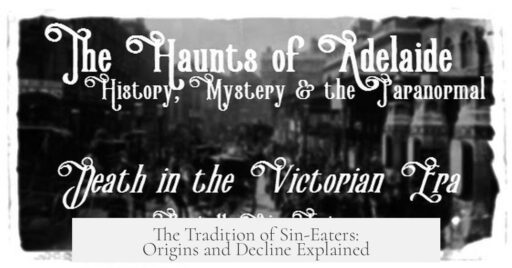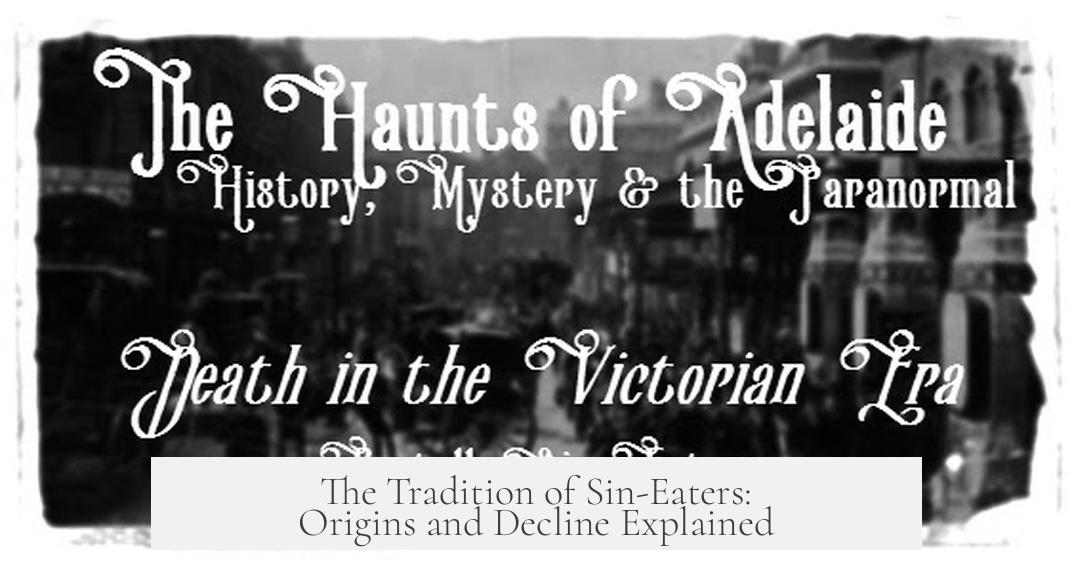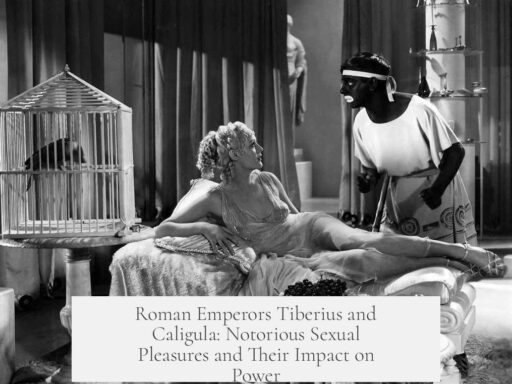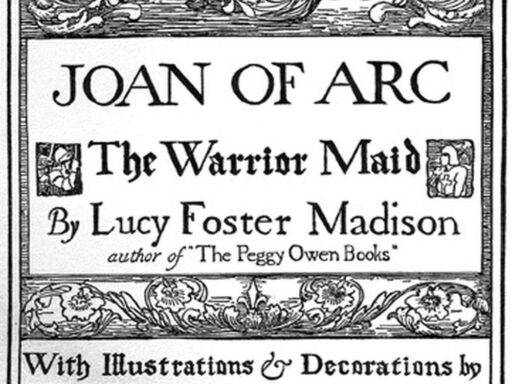Sin-eaters were people believed to absorb the sins of the deceased by performing specific rituals at funerals, effectively taking on the spiritual burden to free the dead from sin. This practice mainly occurred in Wales and the Welsh borderlands of England and was linked to rituals dating from at least the 17th century. The tradition died out by the 19th century.
The notion of sin-eating appears chiefly in folklore and lacks extensive scholarly investigation. Folklorist E. Sidney Hartland conducted the first systematic study and reported that sin-eating was “formerly observed” in Wales and the Welsh Marches—border areas in western England and eastern Wales—especially during funeral rites. By 1892, Hartland considered the tradition extinct.
The earliest known recorded mention comes from John Aubrey’s 17th-century manuscript The Remaines of Gentilisme and Judaisme, which was first published in the late 19th century. Aubrey described the ritual as an “old Custom,” suggesting it was fading even in his time. According to Aubrey, poor people were hired at funerals to symbolically take on all the sins of the deceased. A loaf of bread, a bowl of beer (or milk in parts of North Wales), and a small sum of money were given to the sin-eater, who consumed the bread and drink over the corpse. This act was believed to free the departed’s soul from lingering on Earth due to sin.
Aubrey’s account places these events mainly in Herefordshire and notes the practice was still occasionally observed during the 1650s, despite the Cromwellian government’s religious restrictions. The ritual extended through South and North Wales, with some variation, such as substituting beer for milk.
Additional testimony from the 18th and 19th centuries supports the persistence of sin-eating in parts of Shropshire and Wales up until the early 1800s. Antiquary John Bagford’s letter from 1714/15 recounts a similar practice in Shropshire: after a death, an “old Sire” was given a coin, bread, and ale at the deceased’s home. The Sire ate and drank, then pronounced blessings on the soul’s rest. In Llandebie near Swansea, a sin-eater placed salt and bread on the corpse, muttered an incantation, ate the bread, and claimed the deceased’s sins. The sin-eater was paid and shunned for absorbing others’ sins.
| Location | Ritual Elements | Time Period | Details |
|---|---|---|---|
| Herefordshire | Bread, beer, sixpence | 17th century (Aubrey) | Sin-eater takes on sins during funeral, freeing soul |
| Brecon, South Wales | Bread, beer | At least 1640s | Custom persisted despite minister’s opposition |
| North Wales | Bread, milk | 17th century | Variation with milk instead of beer |
| Shropshire | Bread, ale, coin | Early 18th century (Bagford) | Old Sire performs ritual at funeral |
| Llandebie, Wales | Salt, bread, incantation | 19th century (Moggridge) | Sin-eater eats bread to absorb sins, paid and shunned |
The origins of sin-eating remain uncertain. One theory ties it to the Old Testament concept of the scapegoat, where sins were symbolically transferred to a goat that was then sent away. This connection aligns with the symbolism of transferring sin to another entity.
Another explanation suggests sin-eating emerged as a folk survival or distorted memory of Catholic funerary practices abolished during the English Reformation. Folklorist Jacqueline Simpson proposed that sin-eating reflected a Protestant-era effort to continue assisting souls despite the church’s rejection of purgatory and related rites. Sin-eating replaced formal prayers and masses thought necessary to ease souls’ suffering, becoming a secular or folk substitute when official religious support ceased.
The practice died out mainly in the 19th century as religious, social, and cultural changes reduced belief in sin transference traditions. By the late 1800s, folklore collectors described the custom as extinct or nearly so.
- Sin-eaters absorbed the sins of the dead through ritual bread and drink consumption.
- The tradition was mainly located in Wales and border counties of England.
- Earliest records date back to the 17th century, with the practice fading soon after.
- It possibly derived from biblical scapegoat ritual or post-Reformation reinterpretations of Catholic funerary rites.
- The practice was extinct by the late 19th century, overshadowed by changing religious attitudes.




